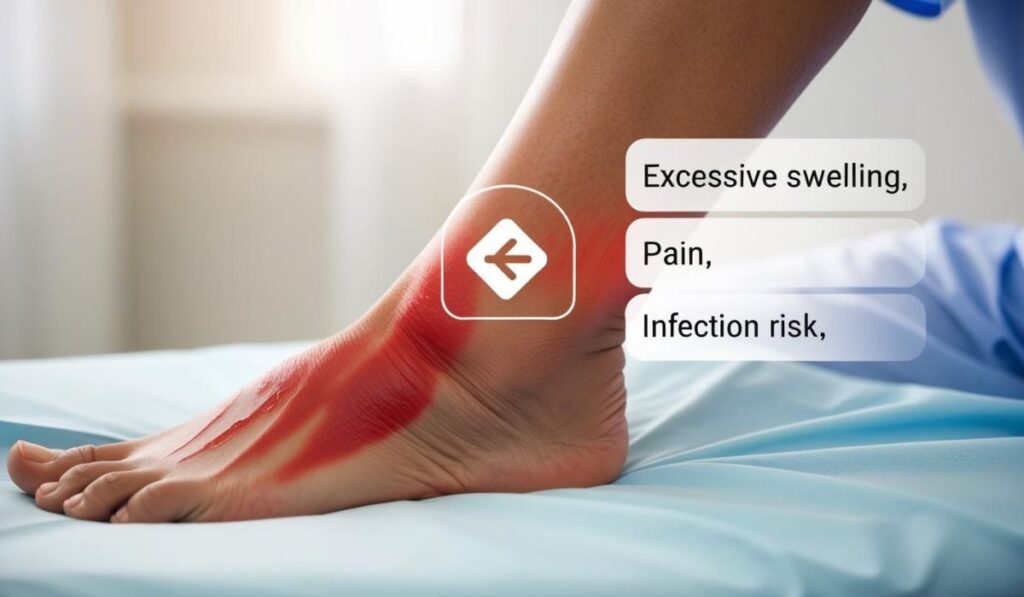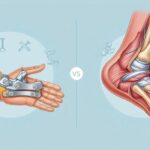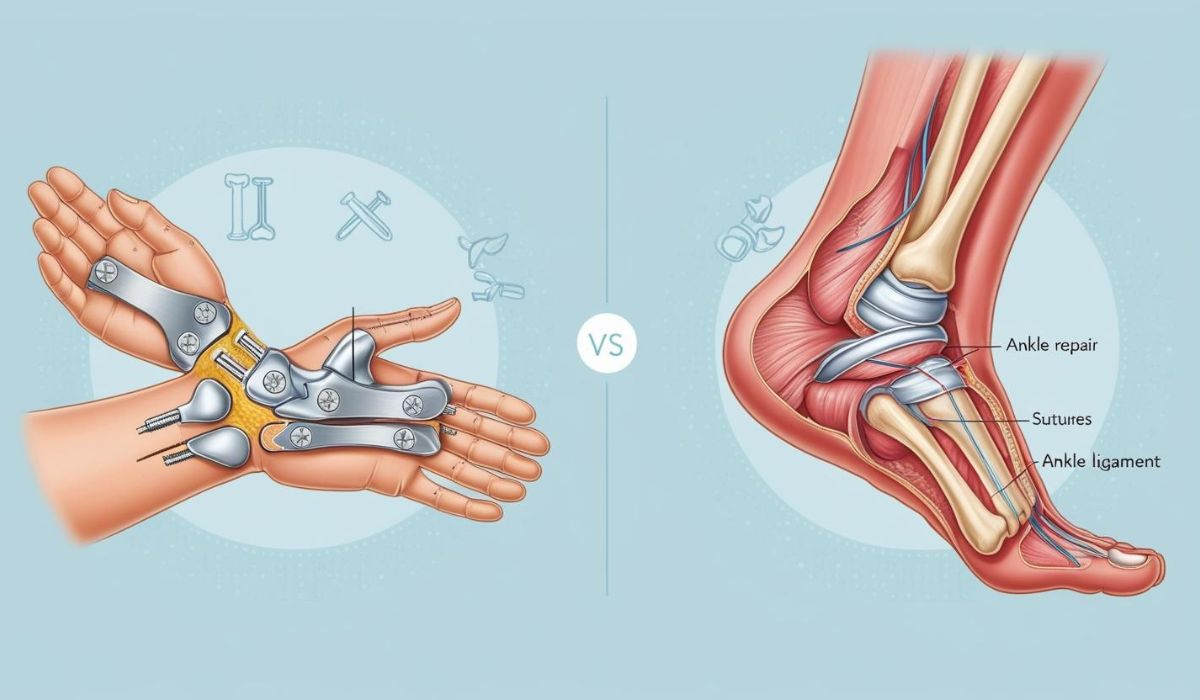Wrist and ankle injuries can be painful and debilitating, affecting mobility and daily activities. In severe cases, surgery becomes necessary to restore function and alleviate pain. But what exactly does wrist or ankle surgery involve? Is it worth it? How long is the recovery process? This article covers everything you need to know about Wellhealthorganic surgery for wrist and ankle injuries, including types of surgeries, recovery times, risks, and post-surgical care.
What is the Wellhealthorganic Surgery For Wrist And Ankle Injuries?
Wellhealthorganic, Wrist injuries often involve fractures, ligament tears, or carpal tunnel syndrome. Surgery is required when:
- Bones are displaced or shattered
- Ligaments or tendons are torn
- Severe nerve compression is causing pain
Types of Wrist Surgeries:
| Surgery Type | Purpose | Recovery Time |
|---|---|---|
| Wrist Fracture Fixation | Repairs broken wrist bones using plates, screws, or pins | 6-8 weeks |
| Carpal Tunnel Release | Relieves pressure on the median nerve | 2-6 weeks |
| Ligament Reconstruction | Fixes torn ligaments to restore function | 3-6 months |
| Wrist Arthroscopy | Minimally invasive procedure to repair soft tissue damage | 4-8 weeks |
Read Also: Wellhealthorganic.com : Buffalo Milk Good For Health
What is the Surgery for an Ankle Injury?

Wellhealthorganic, Ankle surgeries are performed to fix fractures, torn ligaments, or joint instability. The type of surgery depends on the severity and location of the injury.
Common Ankle Surgeries:
| Surgery Type | Purpose | Recovery Time |
|---|---|---|
| Ankle Fracture Surgery | Uses plates and screws to realign bones | 8-12 weeks |
| Ligament Repair Surgery | Restores stability after severe sprains or ligament tears | 3-6 months |
| Arthroscopy | Minimally invasive surgery for soft tissue repair | 4-8 weeks |
| Fusion Surgery | Fuses bones to eliminate pain from arthritis | 6+ months |
Most Common Wrist Surgery Procedures
1. Carpal Tunnel Release
- Purpose: Reduces nerve pressure in the wrist
- Procedure: A small incision is made to release the carpal tunnel ligament
- Recovery Time: 2-6 weeks
- Success Rate: 90% of patients experience relief
2. Wrist Fracture Fixation
- Purpose: Stabilizes broken wrist bones
- Procedure: Uses metal plates, screws, or pins
- Recovery Time: 6-8 weeks in a cast, followed by therapy
3. Ligament Reconstruction
- Purpose: Repairs torn ligaments for joint stability
- Procedure: Tendon grafting or direct ligament repair
- Recovery Time: 3-6 months
Types of Ankle Surgery for Ligaments

Wellhealthorganic, Ankle ligament injuries often occur due to sports, accidents, or chronic instability. Surgery options include:
- Broström Procedure: Repairs torn lateral ligaments
- Tendon Grafting: Uses tendons from other areas to reinforce damaged ligaments
- Ankle Arthroscopy: Minimally invasive ligament trimming or repair
Read Also: Momfood Importantcool: Nutrition and Cooling in Everyday Recipes
Ankle Surgery with Plates and Screws
Why is it Needed?
- Severe fractures where bones need alignment
- Joint instability due to torn ligaments
- Chronic ankle pain due to previous injuries
Recovery Timeline:
- First 2 Weeks: Non-weight bearing, keep foot elevated
- 4-6 Weeks: Start light movement under supervision
- 8-12 Weeks: Begin weight-bearing and physiotherapy
- 3-6 Months: Return to normal activities
How Painful is Ankle Surgery with Plates and Screws?
Pain is moderate to severe initially, but proper pain management includes:
- Medications: Prescription painkillers or NSAIDs
- Physical Therapy: Gradual strengthening exercises
- Ice Therapy: Helps reduce swelling and discomfort
Pros and Cons of Ankle Ligament Surgery
Pros:
✅ Restores stability and function
✅ Prevents long-term joint damage
✅ Minimally invasive options available
Cons:
❌ Long recovery period
❌ Risk of stiffness or infection
❌ Not always 100% successful
Is Ankle Surgery Worth It?
Wellhealthorganic, Ankle surgery is worth it for individuals with severe instability, chronic pain, or fractures that don’t heal naturally. However, for minor injuries, physical therapy and bracing might be better options.
Warning Signs After Ankle Surgery

Be cautious of:
🚨 Excessive swelling or redness – Could indicate infection
🚨 Severe pain unrelieved by medication
🚨 Numbness or tingling – May signal nerve damage
🚨 Fever above 101°F – Possible post-surgical infection
If any of these symptoms occur, seek medical help immediately!
Read Also: Exploring www.myliberla. com : Your Ultimate Source for Lifestyle and Inspiration
How to Ensure a Smooth Recovery?
✅ Follow these steps for better healing:
- Keep weight off the injured area
- Stick to prescribed physical therapy exercises
- Use cold therapy to reduce swelling
- Eat a high-protein diet to support tissue repair
- Avoid smoking and excessive alcohol consumption
FAQs
1. What is the most common wrist surgery?
Wellhealthorganic, The Carpal Tunnel Release is the most common wrist surgery, helping relieve nerve pressure.
2. How long does ankle surgery with plates and screws take?
Wellhealthorganic, The procedure usually takes 1-2 hours, but hospital recovery may last 24-48 hours.
3. Is ankle surgery worth it?
Yes, if you suffer from chronic pain, instability, or severe fractures that don’t heal properly.
4. What are the warning signs after ankle surgery?
Watch out for severe swelling, infection, intense pain, or fever.
5. How painful is ankle surgery with plates and screws?
Pain is moderate to severe initially, but proper pain management and therapy can make recovery smoother.
Conclusion
Wellhealthorganic surgery for wrist and ankle injuries can help restore function and relieve pain from severe fractures or ligament damage. Whether you need plates and screws for ankle surgery or wrist ligament reconstruction, understanding the procedures and recovery process is crucial. Always consult a specialist to determine the best course of action for your injury.












